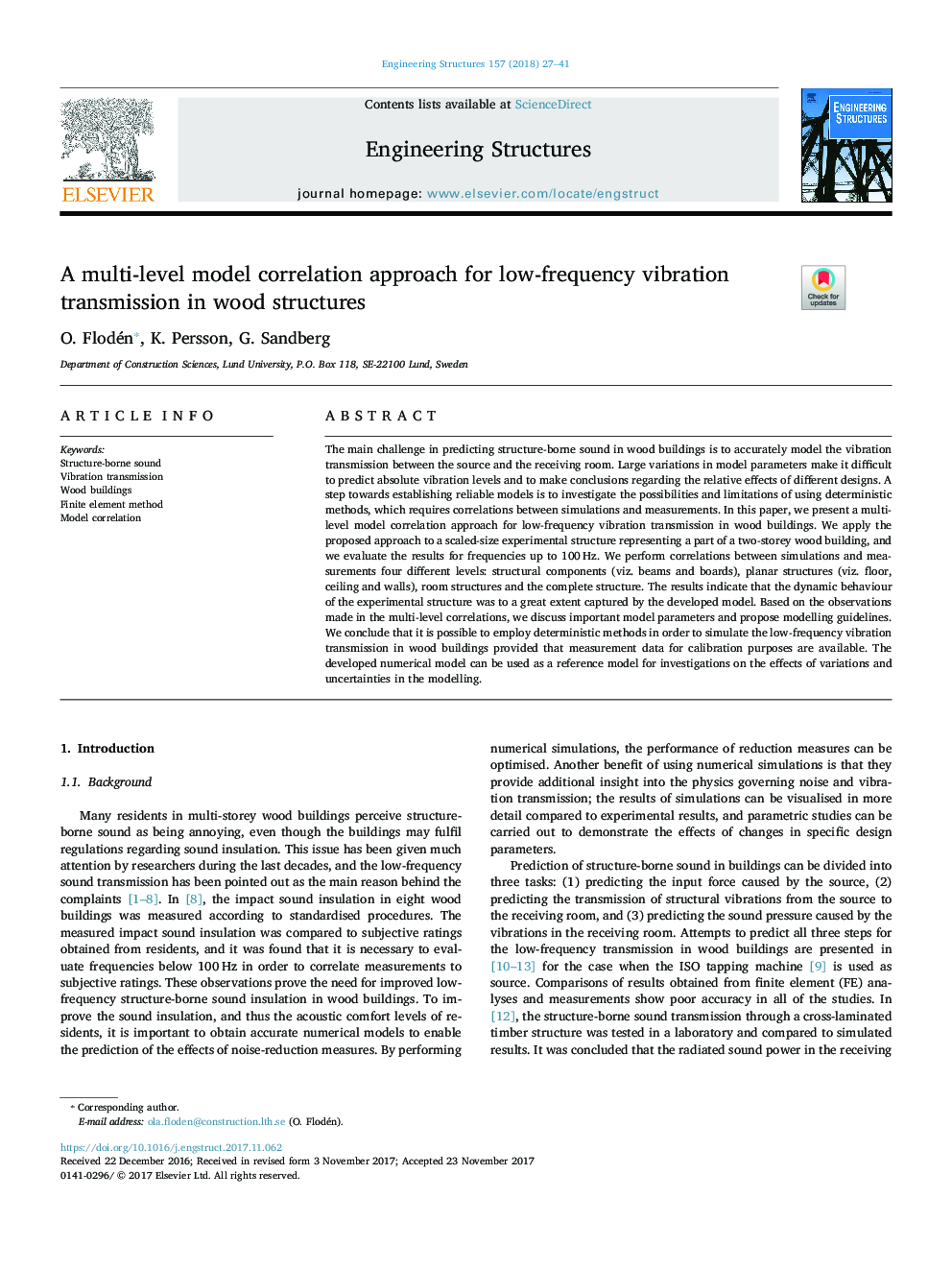| Article ID | Journal | Published Year | Pages | File Type |
|---|---|---|---|---|
| 6738685 | Engineering Structures | 2018 | 15 Pages |
Abstract
The main challenge in predicting structure-borne sound in wood buildings is to accurately model the vibration transmission between the source and the receiving room. Large variations in model parameters make it difficult to predict absolute vibration levels and to make conclusions regarding the relative effects of different designs. A step towards establishing reliable models is to investigate the possibilities and limitations of using deterministic methods, which requires correlations between simulations and measurements. In this paper, we present a multi-level model correlation approach for low-frequency vibration transmission in wood buildings. We apply the proposed approach to a scaled-size experimental structure representing a part of a two-storey wood building, and we evaluate the results for frequencies up to 100â¯Hz. We perform correlations between simulations and measurements four different levels: structural components (viz. beams and boards), planar structures (viz. floor, ceiling and walls), room structures and the complete structure. The results indicate that the dynamic behaviour of the experimental structure was to a great extent captured by the developed model. Based on the observations made in the multi-level correlations, we discuss important model parameters and propose modelling guidelines. We conclude that it is possible to employ deterministic methods in order to simulate the low-frequency vibration transmission in wood buildings provided that measurement data for calibration purposes are available. The developed numerical model can be used as a reference model for investigations on the effects of variations and uncertainties in the modelling.
Related Topics
Physical Sciences and Engineering
Earth and Planetary Sciences
Geotechnical Engineering and Engineering Geology
Authors
O. Flodén, K. Persson, G. Sandberg,
